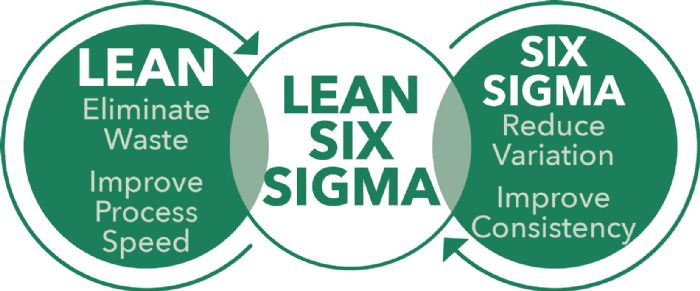Use Lean Six Sigma for Efficiency & Quality Improvement
October 27, 2023Comments
The Six Sigma quality-system methodology developed by Motorola in the early 1980s uses statistical analysis to guide process improvements.
The Six Sigma quality-system methodology developed by Motorola in the early 1980s uses statistical analysis to guide process improvements. The term originates from a well-controlled process with a tolerance band within six standard deviations (±6σ) from the center line. A Six-Sigma-capable process will have Cp and Cpk (centered and non-centered stable process capabilities, respectively) measuring at least 2.0 and a maximum of 3.4 defects/million opportunities over the long term. This equates to 99.99966-percent defect-free operations.
The statistical term sigma refers to the standard deviation of a process around its mean on a normal distribution. Although sigma represents variation, it says nothing about acceptability. An attribute with a small sigma outside of the acceptable range always is defective. Similarly, an attribute possessing a large sigma reflects a large range of likely values. However, if it is not a key input variable to the process, then it may always be acceptable regardless of the variation.
 The Six Sigma-methodology focus on sigma comes from the recognition that variability in process-input parameters—such as tensile properties, binder tonnages, lubricant properties and gauging—affects stamped-part quality, including structural and dimensional integrity. These key output characteristics either must accommodate high sigma values in the key process inputs or accept an increase in the number of parts with out-of-tolerance features. Six Sigma focuses on reducing input-property variability to avoid the time, expense and quality problems associated with quality issues caused by this variability.
The Six Sigma-methodology focus on sigma comes from the recognition that variability in process-input parameters—such as tensile properties, binder tonnages, lubricant properties and gauging—affects stamped-part quality, including structural and dimensional integrity. These key output characteristics either must accommodate high sigma values in the key process inputs or accept an increase in the number of parts with out-of-tolerance features. Six Sigma focuses on reducing input-property variability to avoid the time, expense and quality problems associated with quality issues caused by this variability.
Companies deploying the Six Sigma model aim to eliminate defects while driving toward six standard deviations between the mean and the nearest limit in any process. DMAIC (define, measure, analyze, improve and control) is a continuous-process-improvement methodology in widespread use, and provides a framework to achieve this goal. (Refer to the October 2023 issue of MetalForming for a DMAIC overview.)









